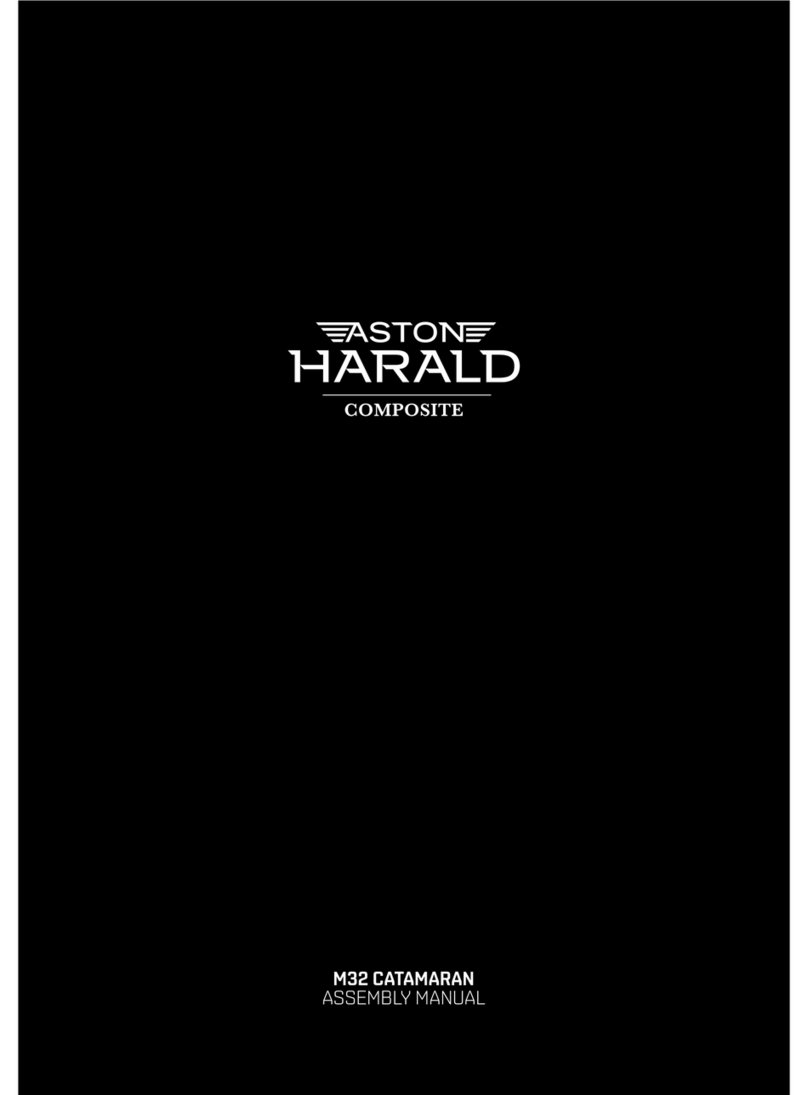4
The instructions in this manual are made with the intention of making
owners safely put together, handle and use the boat for training and racing.
The M32 is a high performance racing boat designed and dimensioned for
inshore racing and should be used accordingly.
WE WANT TO STRESS THE IMPORTANCE OF FOLLOWING THIS MANUAL WHEN ASSEMBLING,
HANDLING AND SAILING THE M32. HAVING THE RIG ACCORDING TO THE RECOMMENDED
SETTINGS WITH THE SPREADER ANGLE, DIAMOND TENSION AND MAST RAKE BEING THE KEY
PARAMETERS.
RIG
•Mast rake should be 480mm +/- 5
mm.
•The diamond tension using the Loos
& Co. gauge RT-10M (3,2-7,1mm) with
the base of the gauge in just above
the mast winch is recommended to be
in the interval 45-55.
•Spreader angle should be 190mm +/-
5mm.
•The soft rig setting is constantly
changing due to material properties.
It is important to always check the rig
settings before any sailing.
•We recommend Spinlock Rig Sense
RGS/0508 for measuring the aft stay
tension.
•Ensure that the cunningham line is
not resting on the diamond stay, a
dyneema can be put around the goo-
seneck to get a better angle for the
ring/block.
•The gennaker luff length should be
15,630 meter, measured bearing to
bearing, with a tension of 40 Kg on
the luff.
•In rig setting point 2 the measuring
point is defined as 70 mm above the
joint on the backside of the aft beam.
M32 CATAMARAN
TECHNICAL INFORMATION




























